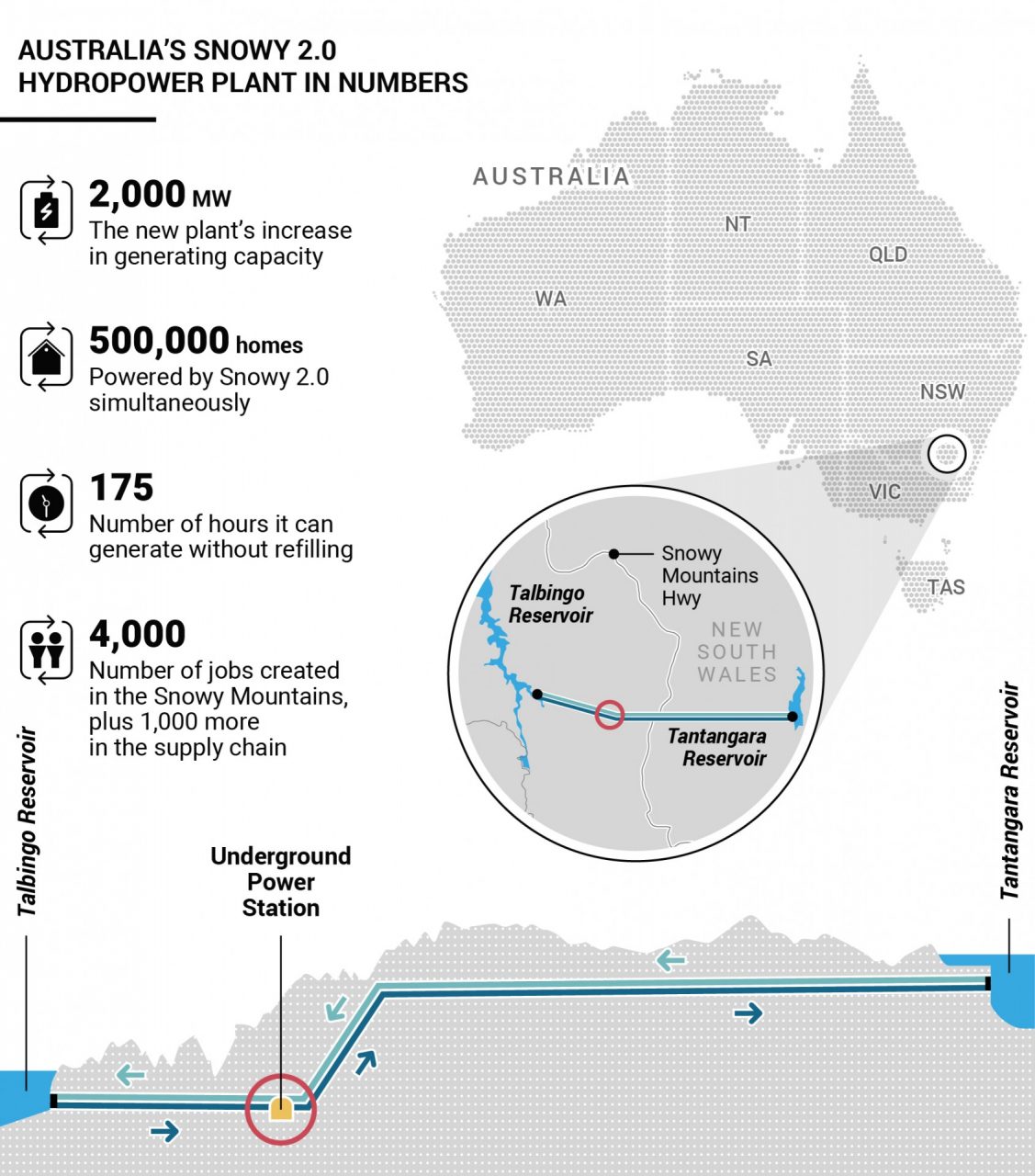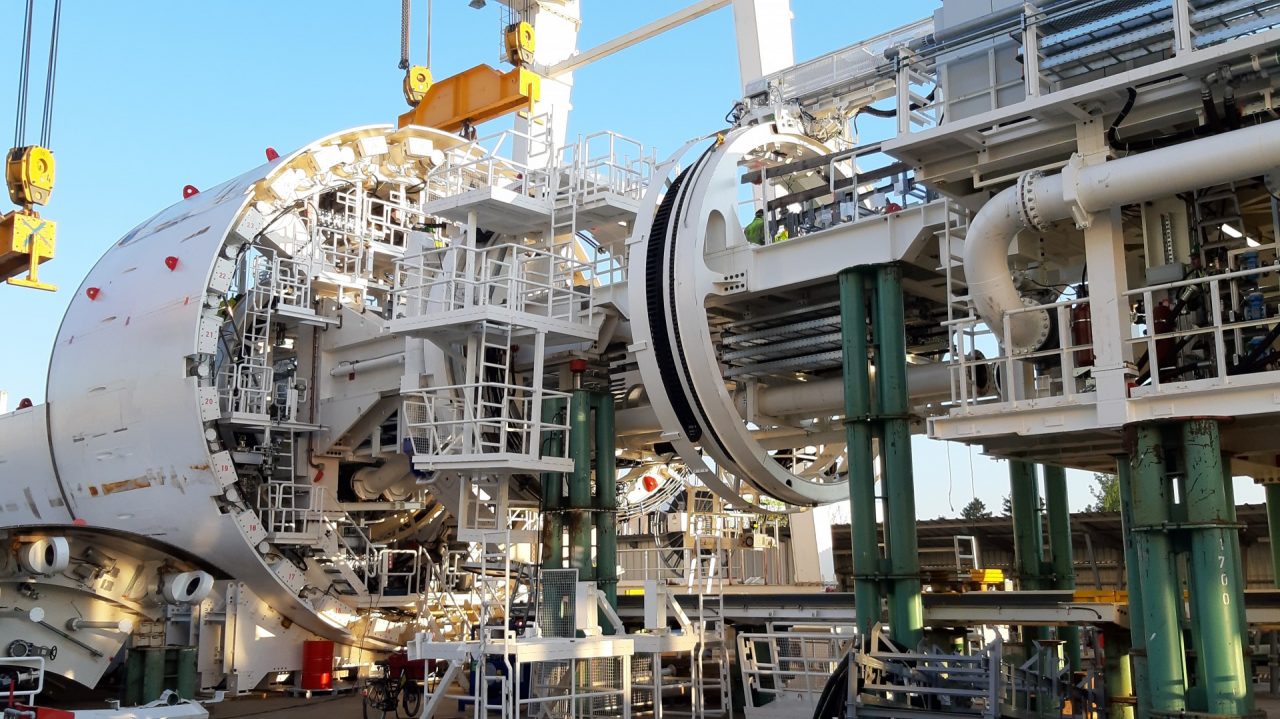A remote location in the mountains of New South Wales is the ideal place to produce energy from water, where a 137-metre (442 feet) long Tunnel Boring Machine (TBM) will soon dig a 2,660-metre (1.6-mile) tunnel with a downhill gradient of 9%.
This is the scene at Snowy 2.0, the mega project that will increase the output of the nine hydroelectric plants at the Snowy Mountains Hydro-electric Scheme. Construction has been awarded by Snowy Hydro to the Future Generation Joint Venture led by Webuild Group, which is working alongside its U.S. subsidiary Lane and Australian partner Clough. When finished, the pumping plant expansion will be capable of increasing Snowy’s output by 2,000 MW, meeting the energy needs of three million homes for over a week.
This impressive project is the largest committed renewable energy project in Australian history, an essential tool for an energy transition that also supports economic development.
Snowy 2.0, the moles at work
The first of the three TBMs landed in Port Kembla in July, transported on board the ship AAL Shanghai. This huge “mole” was divided into parts weighing up to 174 tons, unloaded at the dock, transported to the worksite, and is being reassembled there. This TBM has the necessary technical specifications to excavate this 2,660-meters long tunnel that runs at a 9% gradient to the underground chamber where the power station will be built. This is the beating heart of the pumping plant that uses water to create energy.
To build this plant, the Webuild Group and its partners, including Australian roads contractor Leed Engineering, have already put about 500 people in the field, who have been involved in the exploratory construction work for more than 12 months. Once this tunnel has been completed, the TBM will be put to work on the second 5,800-metre (3.6-mile) long Tailrace tunnel.
The Snowy 2.0 is the expansion of the Snowy Scheme, the pumped-storage hydroelectric power plant system that already generates about one third of the renewable energy of the NEM, Australia’s National Electricity Market.
Bringing renewable energy to the rest of the country
In recent decades, hydropower has confirmed its position as Australia’s leading renewable energy source. According to the Australian Renewable Energy Agency (ARENA), the hydro sector produces between 5% and 7% of the energy consumed each year in the country, and represents 40% of the total produced from renewable sources.
Today there are over 100 hydroelectric plants operating in Australia, most of which are located in the southernmost regions, such as the Snowy Mountains Hydro-Electric Scheme.
According to the Agency, hydroelectric plants “will play a significant role” in the energy transition from traditional to renewable sources. Pumped-storage hydroelectricity plants like Snowy have two reservoirs located at different altitudes and connected by long water tunnels. When the demand for energy increases, the system starts up by releasing water from the upper to the lower reservoir, which moves the turbines of a generator creating electricity. At times of low energy demand and when there is excess power in the NEM, Snowy 2.0 can pump the water back to the top reservoir, ready for when consumers need it.

Webuild's role in sustainable infrastructure development
The construction of Snowy 2.0 is part of the Webuild Group’s worldwide commitment to support the development of sustainable infrastructure works.
Not only electricity produced by water, but also sustainable mobility (through the construction of metro lines and high-speed trains) aimed at reducing congestion and pollution.
Clean hydro energy projects account for 51% of the new orders acquired by Webuild in 2019. Thanks to its leadership position in the sector, Webuild’s projects avoid harmfull Co2 emissions of 14.5 tonnes each year.
This business strategy is in line with the Sustainable Development Objectives set by the United Nations, demonstrating that sustainable infrastructure can be the way to create well-being and growth in the not too distant future.

